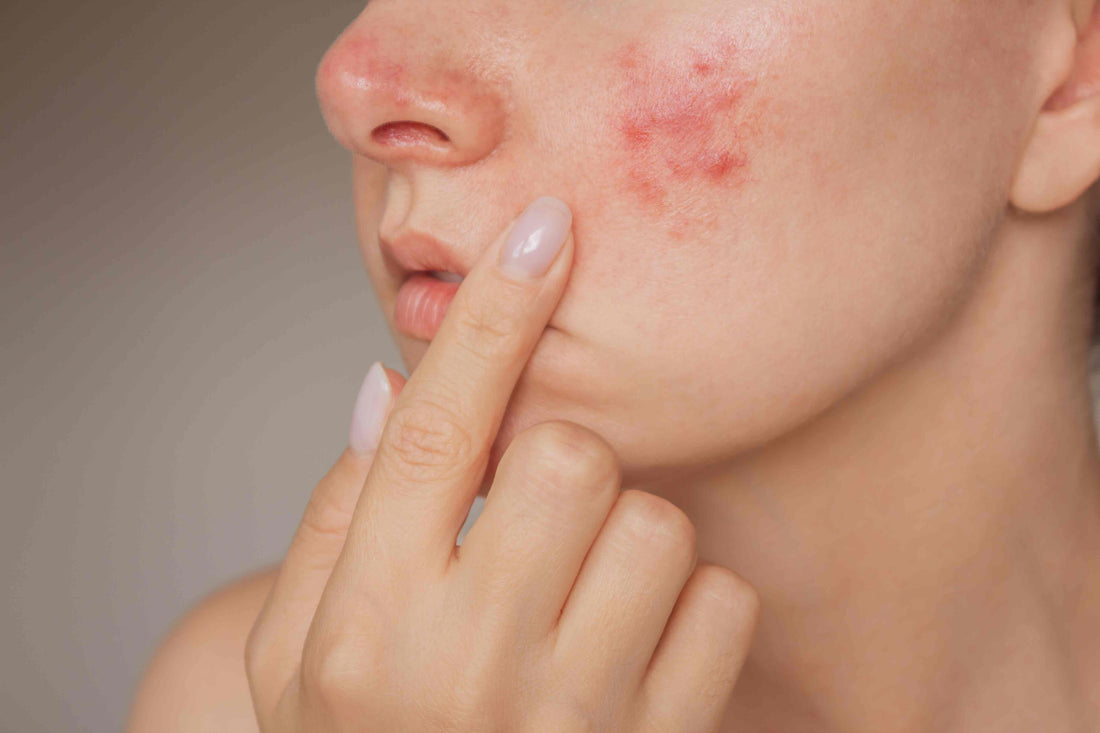
Is it acne or rosacea?
To mark Rosacea Awareness Month, we chat to Professor Nicola Ralph, a dermatologist at Institute of Dermatologists, Ireland, about rosacea and how to differentiate it from other reasons redness inducing conditions, such as acne...
Acne is a skin condition that can sometimes be mistaken for rosacea – how can you tell the difference?
Acne and acne rosacea are two different skin conditions that can share some similar symptoms, which can make it difficult to differentiate between them. Acne is a common skin condition that is characterized by the formation of inflammatory spots, blackheads, whiteheads, and other types of lesions on the face, chest, and back such as nodules. Rosacea, on the other hand, is a chronic inflammatory skin condition that primarily affects the face and is characterized by persistent redness, flushing, and the appearance of small, red, pus-filled bumps predominately affecting the central face.
Rosacea is a chronic inflammatory skin condition but can be managed with a combination of sunscreen, topical therapies, oral/systemic therapies and use of intense pulse light. There are some key differences between acne and rosacea that can help doctors make a diagnosis. Some of these differences include:
Age of onset: Acne typically develops during puberty, while rosacea more commonly develops in adults over the age of 30-40.
Location of lesions: Acne lesions can occur on the face, chest, and back, while rosacea primarily affects the central face, including the nose, cheeks, and forehead.
Type of lesions: Acne lesions can include blackheads, whiteheads, and cysts, while rosacea is characterized by small, red, pus-filled bumps known as papules/pustules.
Presence of other symptoms: Rosacea may be accompanied by symptoms such as facial flushing, burning, and stinging, while these symptoms are not typically associated with acne.
Triggers: Rosacea can be triggered by factors such as sun exposure, hot weather, spicy foods, and alcohol, while acne is not typically triggered by these factors.
In some cases, the diagnosis of acne or rosacea may be straightforward based on clinical presentation and other factors. However, in some cases, the two conditions can coexist, which can make diagnosis more challenging. A doctor may need to take a detailed medical history, perform a physical examination, and consider factors such as age of onset, location of lesions, and other symptoms to make an accurate diagnosis. Treatment may also be different if one is suffering from an overlap of acne/rosacea as certain products used to treat acne may irritate those also suffering with rosacea.
Treatment for rosacea may include topical or oral medications, laser/light therapy, and lifestyle modifications to avoid triggers.
Build a rosacea friendly routine
Medical treatment is key, but the right skincare can help to reduce symptoms and minimise flare-ups. Nicola explains that when selecting skincare products for patients with rosacea, it is important to choose gentle, non-irritating formulations that are free of potential triggers such as alcohol, fragrance, and harsh exfoliants.
Some ingredients that may be beneficial for rosacea-prone skin include:
Anti-inflammatory ingredients: Ingredients such as niacinamide, green tea extract, chamomile, and licorice root extract have anti-inflammatory properties that can help reduce redness and irritation in the skin.
Barrier repair ingredients: Ingredients such as ceramides, hyaluronic acid, and fatty acids can help strengthen the skin's natural barrier function, which may be compromised in people with rosacea.
Sunscreen: Sun exposure is a common trigger for rosacea, so it is important to use a broad-spectrum sunscreen with a minimum SPF of 30 or higher to protect the skin from UV damage. I have a preference for physical/mineral based sunscreen over chemical sunscreens as those with rosacea have a tendency to sensitive/easily irritated skin and may not be suitable to use chemical SPF.
Mild exfoliants: While harsh exfoliants can aggravate rosacea-prone skin, gentle exfoliants such as alpha hydroxy acids (AHAs) can help improve skin texture and tone without causing irritation.
It’s important to note that every individual's skin is unique, and what works for one person may not work for another. It is always best to consult with your doctor/dermatologist for personalised recommendations and treatment plans.
